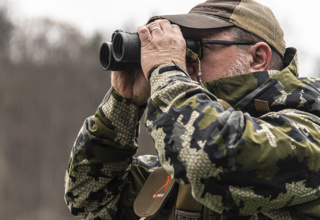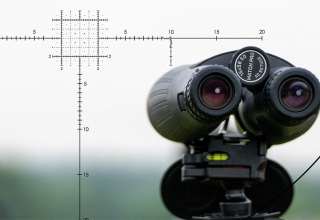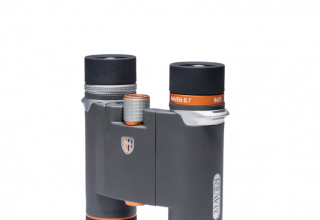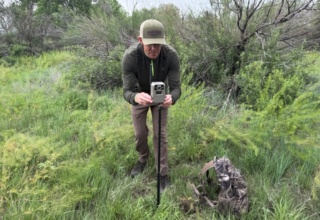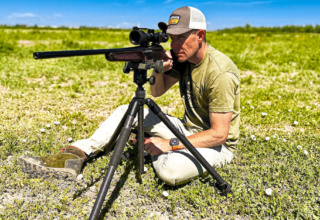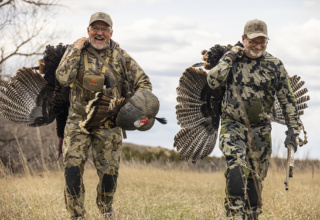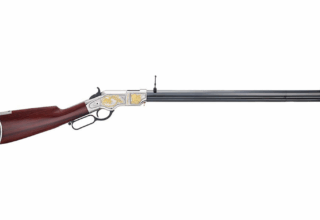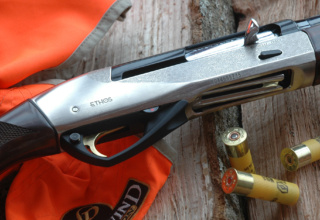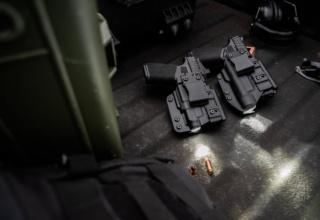Spring is just around the corner and that can only mean one thing: time to hit the woods for the King of Spring. To increase your odds of notching a tag on a tom, you need to know where the birds are. Like all hunting, scouting can dramatically increase your chances of success.
Check Trail Cameras
You know those cameras you strategically placed long before deer season and checked regularly for bucks? Now is the time to check them for longbeards. Set them along the edges of food plots and open fields, or along logging roads, trails, or atop ridges if you’re hunting wooded areas. This will give you an idea what time they are showing up, where they may be feeding and strutting, or where they are coming from. Use this intel to help you find their travel routes or roosts.

Hit the Woods
Waking up early to go sit in the woods without a shotgun may sound painful, but it can prove extremely useful. Dress in full camo, grab your binoculars, and choose a spot to sit. Use a locator call such as a crow or owl call and listen for gobbles. This can tell you where they are roosting which is critical intel. Now is not the time to practice your yelps and purrs. You don’t want to educate the birds before the season. If you choose to move, do so slowly and cautiously. You don’t want to bust birds. Periodically use your locator call to track their movement in an attempt to figure out where they head once they’re on the ground. Mark on a map where you hear gobbles and make a game plan.
Midday Scouting
Like I mentioned above, don’t take a casual stroll in the morning or you risk bumping turkeys. Instead hit it hard in the afternoon. If your prime hunting terrain is hardwoods, walk logging roads or trails and occasionally use a locator call to see if you get a shock gobble in return. Sit on the edge of crop fields or meadows and watch for strutters or flocks of hens. Where there are hens, there are toms. Get to a high vantage point and glass, glass, glass. Pay attention to the times and locations you see birds. Watch where they enter and exit fields. This will give you an idea of where they are coming from and where to intercept them.
Look for Signs
In your midday scouting, look for scrapes, droppings, and feathers. If you find a lot of feathers, especially primary wing feathers around the base of a tree, you most likely have stumbled upon their sleeping quarters. Scrapes and strut marks (wing drag markings) could reveal feeding areas. Look for areas to conceal yourself and plan on hunting these spots opening morning.
Locate Feeding Areas
There are two ways to do this: locate roosts and attempt to find their travel route to where they spend their afternoons feeding or take a look at a topo map and try to locate spots that you feel offer good grub areas. By spring, acorns the birds have fed on all winter will be mostly gone, so flocks will head for green fields.
You may have seen turkeys in late winter while deer hunting, but don’t count on them being in the same location come spring. Food sources change from winter to spring, and birds are going where the food is. Ideally you should scout hardcore one to two weeks before opening day.
Night Before the Opener
In the early evening, slip into the areas you have located sign or heard gobblers—spots you believe the birds are roosting. Sit quietly and be patient. Listen for soft calling or gobbles as birds make their way to large branch trees for the night. You may hear wing beats as they fly up and settle in. If you’re really lucky, you’ll see them. Once night falls slip quietly out of the woods. Return to this spot long before the sun comes up so that you don’t spook the birds before they fly down for the day.

Keep Your Eyes Peeled All Year
Ideally, you should scout all year long. You’re asking, “didn’t you just say one to two weeks before the season?” I did. That will give you the best odds of success. But if you keep your eyes on the lookout for roosting spots, travel routes, and feeding areas all year long, you’ve saved yourself a lot of time come spring. If you already know where the birds are, you’ll just need to figure out their new feeding areas before opening morning.
- Shoot ON’s Annual Excellence Awards - December 12, 2025
- MTM Case-Gard Introduces Compact Carbine Rifle Case - November 26, 2025
- Burris FastFire E Enclosed Emitter Red Dot Debuts - November 26, 2025


